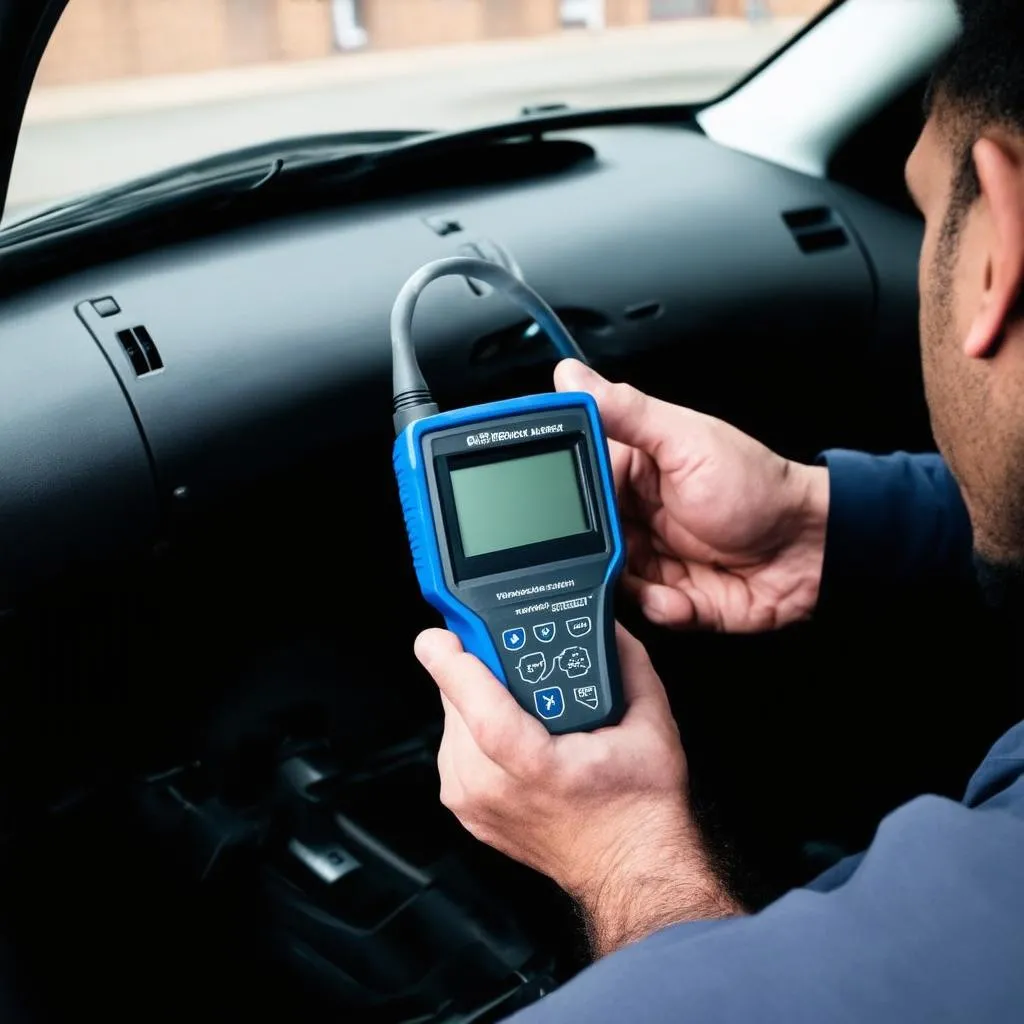“A stitch in time saves nine,” goes the old saying. It’s a perfect metaphor for car maintenance. Catching issues early can save you money and headaches down the road. And when it comes to troubleshooting your vehicle, the OBD II system is your best friend. But what about Haynes manuals? Do they provide the kind of OBD II diagnostic information you need?
Understanding the Importance of OBD II Diagnostics
OBD II, short for On-Board Diagnostics II, is a standardized system used in most cars manufactured after 1996. It’s essentially your car’s built-in computer that monitors various engine functions and reports any problems to the driver through a series of codes. These codes can help you quickly identify potential issues with your car, such as a faulty sensor, a clogged catalytic converter, or a problem with the fuel system.
Think of it like a doctor’s appointment for your car. By using an OBD II scanner, you can “check your car’s vitals” and get a clear picture of what’s going on under the hood.
Haynes Manuals and OBD II: A Deep Dive
Now, let’s talk about Haynes manuals. They’re known for their detailed instructions and helpful diagrams for car repairs. But do they provide the kind of in-depth OBD II diagnostic information that you need?
The short answer is… not really. While Haynes manuals offer some general information about the OBD II system and how to access trouble codes, they don’t go into the specifics of interpreting those codes. They may provide a basic list of common OBD II codes and their potential causes, but they lack the comprehensive explanations and troubleshooting guides that you’d find in dedicated OBD II diagnostic software or specialized manuals.
Imagine you have a headache. A Haynes manual might tell you to take an aspirin, but a medical professional can diagnose the underlying cause and provide a targeted treatment plan. Similarly, Haynes manuals can be a valuable resource for general car maintenance and repair, but they don’t provide the detailed OBD II diagnostics you need to pinpoint and fix problems.
What About Other Resources?
So, if Haynes manuals don’t offer in-depth OBD II diagnostics, where do you go for this information?
- Dedicated OBD II Diagnostic Software: These are specialized programs designed to read and interpret OBD II codes. They often come with extensive databases of codes, detailed explanations, and troubleshooting guides.
- Specialized OBD II Manuals: Several companies, such as Mitchell, Alldata, and AutoZone, publish comprehensive manuals specifically focused on OBD II diagnostics. These manuals often offer detailed information on code definitions, troubleshooting steps, and repair procedures.
What’s the Best Approach?
The best approach is to combine resources for a comprehensive understanding of OBD II diagnostics.
- Start with a Haynes manual. It can be a great guide for basic car maintenance and repair.
- Invest in a dedicated OBD II diagnostic scanner. This allows you to read and interpret trouble codes directly from your car’s computer.
- Consult specialized OBD II manuals or software. These resources provide the detailed information you need to pinpoint the problem and perform the necessary repairs.
Can OBD II Diagnostics Really Save You Money?
Absolutely! By using OBD II diagnostics, you can often catch problems early, preventing them from escalating and becoming more expensive repairs. Think of it like catching a cold early. With a simple remedy, you can prevent it from turning into a full-blown flu.
Frequently Asked Questions
Here are some frequently asked questions about OBD II diagnostics:
Q: Can I use a smartphone app for OBD II diagnostics?
Yes, there are numerous smartphone apps available that can connect to your car’s OBD II port and read trouble codes. However, the accuracy and features of these apps can vary. It’s crucial to choose a reputable app with a good track record.
Q: Do I need to be a mechanic to use OBD II diagnostics?
No, you don’t need to be a mechanic. OBD II diagnostics are designed to be user-friendly. With a basic understanding of the system, even a novice car owner can use an OBD II scanner to read and interpret trouble codes.
Q: Can I clear OBD II codes myself?
Yes, you can clear OBD II codes yourself. However, clearing codes doesn’t mean the problem has been fixed. It’s essential to address the underlying issue to prevent the code from returning.  OBD II code reader
OBD II code reader
Q: Is there a specific OBD II scanner for European cars?
Yes, there are OBD II scanners specifically designed for European cars. These scanners often have a broader database of codes and support features that are unique to European vehicles.
Choosing the Right Tool for the Job
It’s important to choose an OBD II diagnostic scanner that’s compatible with your vehicle. Not all scanners are created equal. Some scanners are more basic and only provide access to generic codes, while others offer advanced features, such as live data streaming and fault code analysis.
Seeking Professional Help
Remember, if you’re unsure about any aspect of OBD II diagnostics or feel uncomfortable working on your car, it’s always best to consult a qualified mechanic. They can provide expert advice and assistance.
Where to Learn More
For more information on OBD II diagnostics, you can explore these resources:
Conclusion
While Haynes manuals are a valuable resource for car maintenance, they don’t provide the in-depth OBD II diagnostics you need to effectively troubleshoot your vehicle. Investing in a dedicated OBD II scanner and utilizing specialized resources can help you identify and address problems before they escalate.
Have any questions about OBD II diagnostics? Leave a comment below! And for help with installing and using diagnostics tools, connect with us on Whatsapp at +84767531508. Our team of experts is available 24/7 to provide assistance.